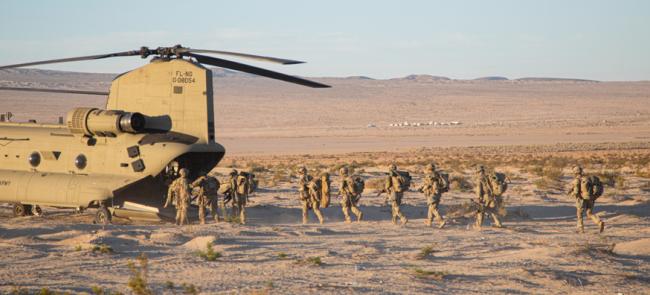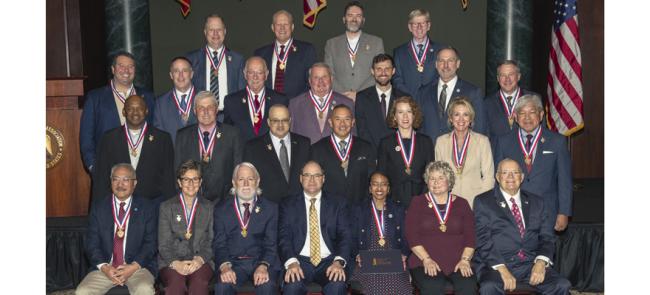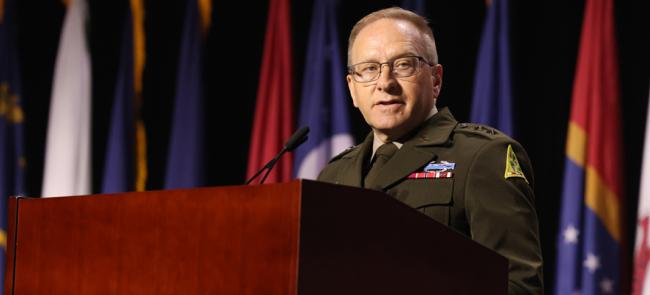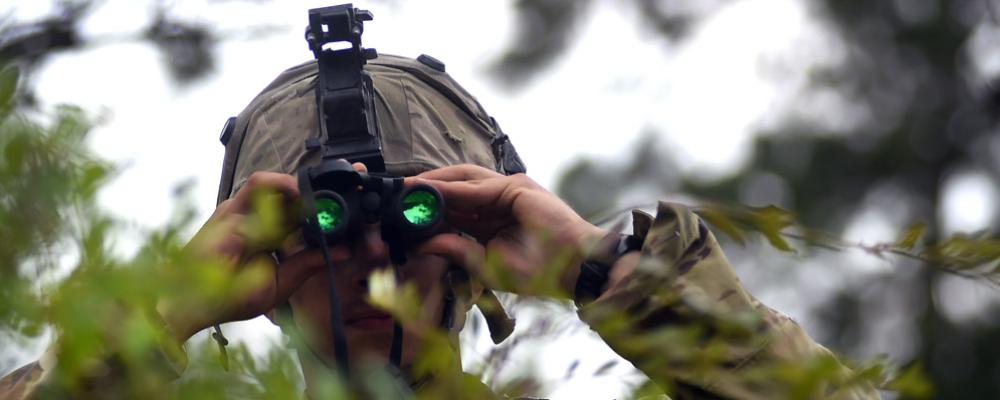
Box of Change
Soldiers refer to the sprawling maneuver area at the Joint Readiness Training Center here as “the Box.”
Visiting infantry brigade combat teams spend two weeks in its swampy pine forest confines undergoing the most realistic combat training the Army offers.
Almost nothing is simulated. Soldiers face an opposing force more technically and tactically proficient than any they would face overseas in a 24/7, free-play exercise. The result is nearly all the sights, sounds and stresses of actual combat.
Troops leave the box changed, with mental and physical muscle memory they didn’t have when they entered. And that’s the point. This is where the Army wants soldiers to make mistakes and learn from them — not in a combat theater.
Since 9/11, more than 1.6 million U.S. soldiers have deployed overseas, many of them two, three or four times. According to JRTC officials, 50% of those troops trained here.
But JRTC is changing. For two decades, visiting soldiers faced an opposing force mimicking insurgents like the troops would face in Iraq and Afghanistan. Today, the home-team enemy uses Russian and Chinese doctrine, and the battle is more like the large-scale, multidomain combat of the future.
In June, the 3,000 soldiers of the New Jersey Army National Guard’s 44th Infantry Brigade Combat Team got their turn in turn in the Box. It was the organization’s largest training exercise in over a decade, with roughly 2,500 additional Guard troops from more than a dozen states and Puerto Rico participating in rotation 23-08.
“We’re working, eating, sleeping where we fight,” said Lt. Col. Omar Minott, the 44th IBCT’s brigade combat team executive officer. “The National Guard and Reserves have to be capable of supporting and executing that large-scale combat operations mission. It can’t be just the active duty.”
If we can succeed here, we can go into a real combat scenario and succeed.
—Lt. Col. Omar Minott, the executive officer of the New Jersey Army National Guard's 44th Infantry Brigade Combat Team
The fight in the Box included tactics and weapons recently seen in the ongoing conflicts in Ukraine and Syria. Unmanned aircraft systems — “drones” — were among them.
“Units have to train to fight what we think they’re going to have to face on the modern battlefield,” said Brig. Gen. Nate Lord, the deputy commanding general of the Army Guard’s 42nd Infantry Division, the 44th IBCT’s higher headquarters. “All those lessons learned from the battlefield are very quickly integrated into the training program and instruction here.”
“You can’t put a price on the generational readiness that these exercises build for the Army Guard,” he said.
The opposing force, which goes by “Geronimo” or “G-Man,” but is officially known as the JRTC Operations Group, instills many of those lessons in the Box. Members of the 44th IBCT said Geronimo was a constant presence, rarely seen but always felt.
First Lt. Christian Thompson, the mortar platoon leader with the Georgia Army Guard’s Headquarters and Headquarters Company 1st Battalion, 121st Infantry, often found himself targeted by Geronimo, which tracks troops via their cell phones.
Thompson said his time in the Box taught him to reduce his dependency on digital tools on the battlefield.
“We’re going to have to be less reliant on technology,” he says. “It can be hacked. When you don’t have a phone, when you don’t have a calculator in front of you, how are you going to operate?”
Sgt. Jacob Brown, a member of Thompson’s unit, said the experience illustrates how critical it can be for the Guard to align its training and standard operating procedures to active-component units.
“We don’t live and breathe the Army every day,” he says. “That’s just the biggest challenge — getting these guys to the point they need to be at faster and being able to maintain that even though we don’t do this every day.”
The vegetation and weather are also challenging in the Box. The forest is thick. And when the forest ends the swamps begin. Additionally, in June, the air is hot and sticky. Some members of the 44th IBCT called the Box it “Satan’s Asshole.”
Many also used another derisive term soldiers coined many years ago: “Fort Puke.” It’s a spinoff of the post’s name when the Guard brigade arrived: Fort Polk, in recognition of Leonida K. Polk, a Confederate general from North Carolina.
By the time the Guardsmen left, the installation had been renamed Fort Johnson, after Sgt. William Henry Johnson, who earned the Medal of Honor in World War I as part of a New York Guard unit known as the Harlem Hellfighters. The change was part of a congressional effort to remove symbols of the Confederacy from Defense Department property.
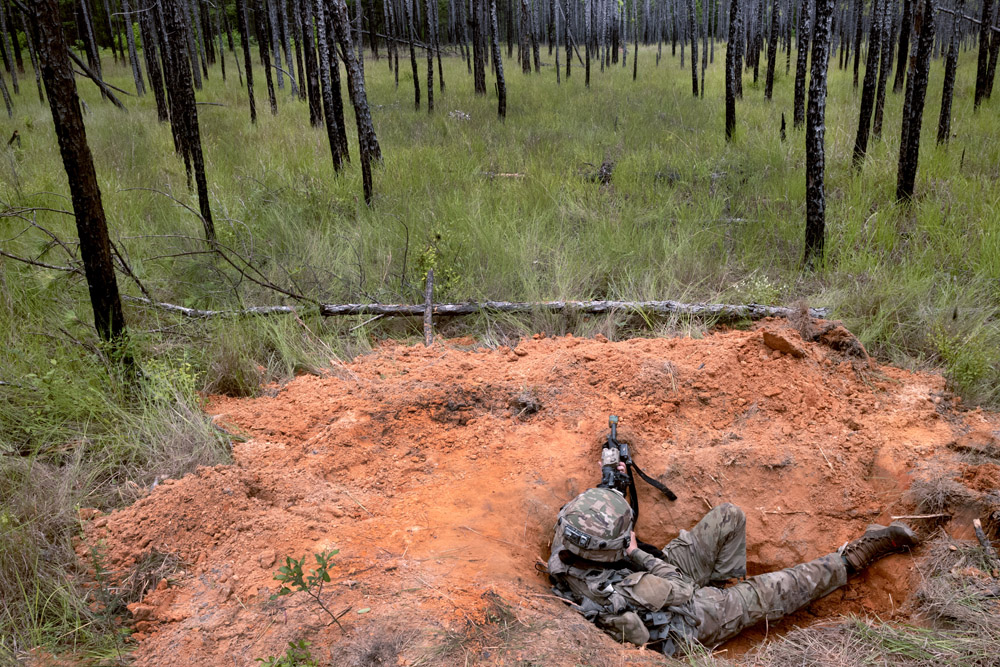
Brigade leaders said the tough conditions and opposing force made the unit better,
“We are not only improving upon basic soldier skills, but we’re working together to bring our organization, our infantry brigade combat team, to the next level,” said Maj. Vincent Solomeno, the 44th IBCT’s chief of protection and assistant brigade engineer. “And that, in the future, will have second- and third-order effects as we share that knowledge with soldiers that are both on the ground now and have yet to enlist.”
Added Minott, the brigade XO, “This is the toughest enemy, the best trained enemy, that we’re ever going to meet. So, if we can succeed here, we can go into a real combat scenario and succeed.”
Some soldiers expressed the same sentiment.
“As the days went, I felt more confident and proficient in my duties in the brigade aviation element, where I assisted in air assault missions as well as [UAS]” said Sgt. Christopher Moses, an air traffic controller. “It was a constant battle of improvising and improving to become more efficient and valuable to the unit’s mission.
“Like Gen. [George S.] Patton said: ‘He who sweats more in training, bleeds less in battle.’”
The author can be reached at [email protected].
TOP PHOTO: Spc. Grant Simmons, a member of Kentucky’s 1123rd Engineer Company (Sapper), looks for enemy movement at the Joint Readiness Training Center. (Photo by Sgt. 1st Class Jon Soucy)

